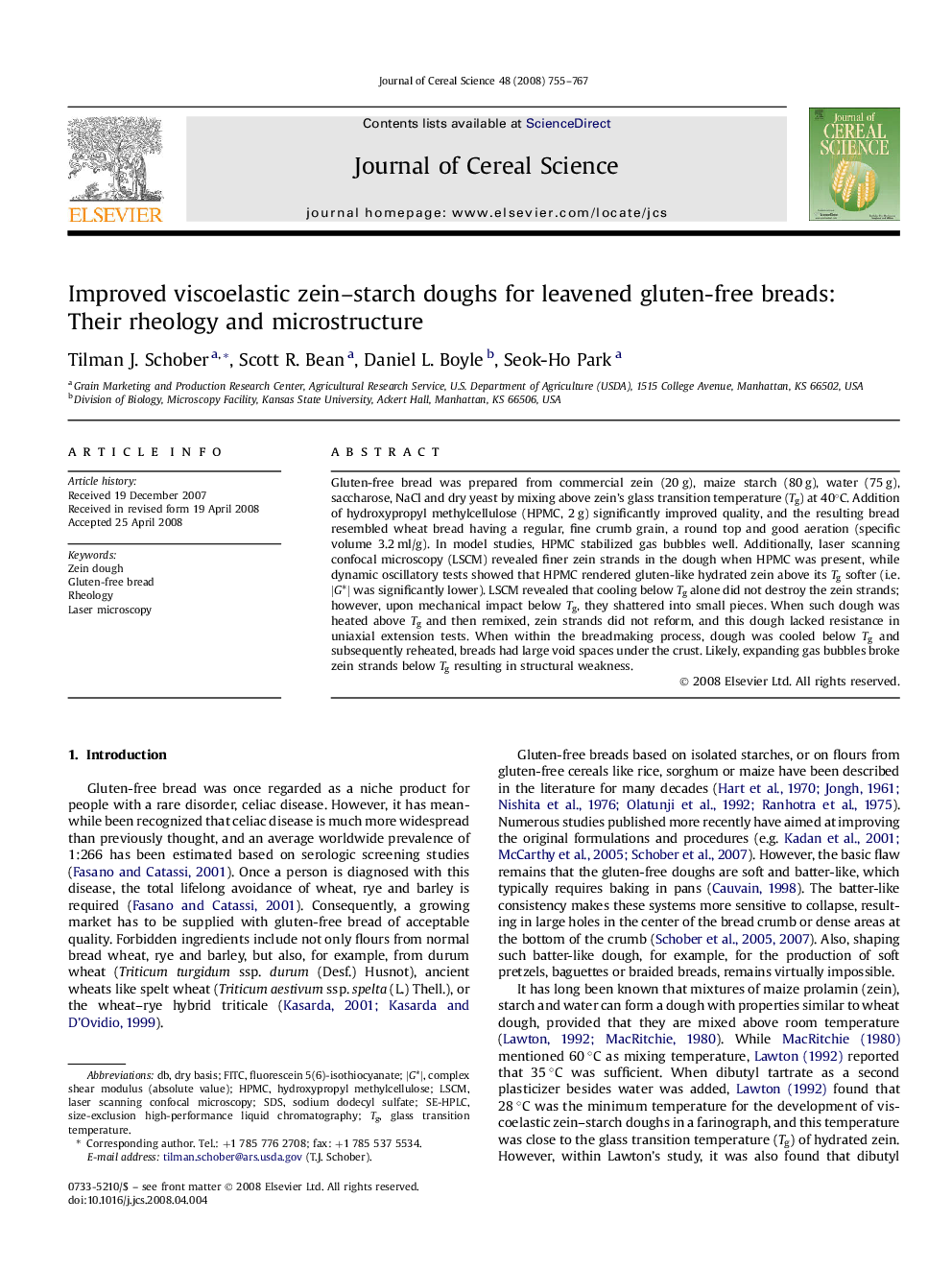| Article ID | Journal | Published Year | Pages | File Type |
|---|---|---|---|---|
| 4516426 | Journal of Cereal Science | 2008 | 13 Pages |
Gluten-free bread was prepared from commercial zein (20 g), maize starch (80 g), water (75 g), saccharose, NaCl and dry yeast by mixing above zein's glass transition temperature (Tg) at 40°C. Addition of hydroxypropyl methylcellulose (HPMC, 2 g) significantly improved quality, and the resulting bread resembled wheat bread having a regular, fine crumb grain, a round top and good aeration (specific volume 3.2 ml/g). In model studies, HPMC stabilized gas bubbles well. Additionally, laser scanning confocal microscopy (LSCM) revealed finer zein strands in the dough when HPMC was present, while dynamic oscillatory tests showed that HPMC rendered gluten-like hydrated zein above its Tg softer (i.e. |G*| was significantly lower). LSCM revealed that cooling below Tg alone did not destroy the zein strands; however, upon mechanical impact below Tg, they shattered into small pieces. When such dough was heated above Tg and then remixed, zein strands did not reform, and this dough lacked resistance in uniaxial extension tests. When within the breadmaking process, dough was cooled below Tg and subsequently reheated, breads had large void spaces under the crust. Likely, expanding gas bubbles broke zein strands below Tg resulting in structural weakness.
